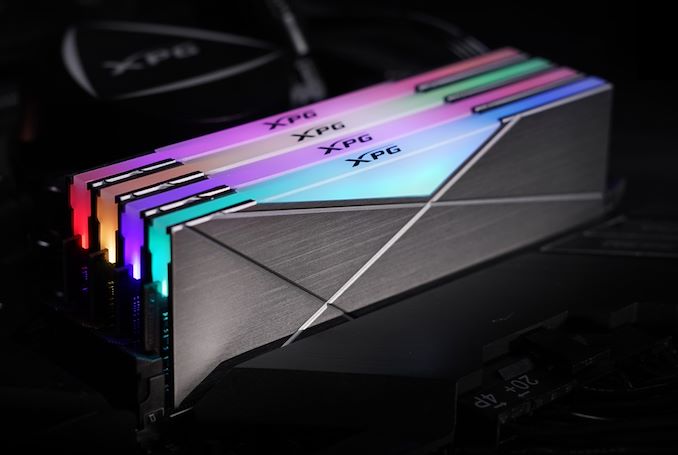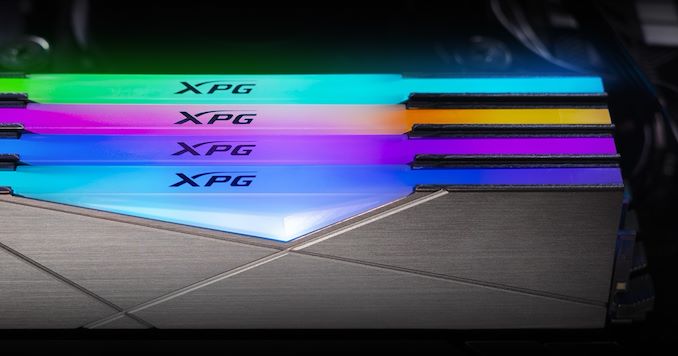XPG Spectrix D50 Memory: A More Subtle RGB DDR4
by Gavin Bonshor on April 15, 2020 12:00 PM EST
ADATA's XPG division has unveiled its latest addition in the high-performance DRAM segment, the Spectrix D50. Starting from 8 GB DDR4-3000 modules, the latest Spectrix D50 kits will go up to 32 GB capacity, with some capacities hitting speeds of up to DDR4-4800.
XPG is the gaming division of ADATA, and has a broad portfolio of DRAM catering to multiple areas on the market. The latest from XPG is the Spectrix D50 which is similar to the Spectrix D60G, but with a more subtle take on RGB. Designed for enthusiasts and overclockers, it has a solid heatsink design with some interesting tweaks to make it look less aggressive than the D60G.
The heat spreader on the Spectrix D50 memory includes a criss-cross geometric design on its 2 mm thick heatsink and a triangular RGB panel that can be controlled via the XPG RGB Sync app. XPG claims it can be used with major motherboard manufacturers own software, but it doesn't officially state which. Users can customize the look with three available RGB presets which consist of static, breathing, comet, or even synchronize the effect to the sound of music.
The XPG Spectrix D50 will be available in single 8 GB modules and 2 x 8 GB (16 GB) up to DDR4-4133, with single 16 GB modules and 2 x 16 GB kits ranging up to DDR4-3600. Each kit itself varies in latency from CL16 on the DDR4-3000 and DDR4-3200 kits, with CL18 on the DDR4-3600 kits, each with an operating voltage of 1.35 V.
The higher speed DDR4-4133 kits are CL19 with a higher operating voltage of 1.4 V. All of the XPG Spectrix D50 kits support the latest Intel and AMD platforms through its integrated XMP 2.0 profiles.
All the XPG Spectrix D50 kits from DDR4-3000 to DDR4-4133 will start filtering into retail channels imminently, with the higher capacity 32 GB modules and the higher speed DDR4-4600/DDR4-4800 kits coming later on in Q2. XPG hasn't unveiled any pricing information at present.
Related Reading
Source: XPG












21 Comments
View All Comments
eastcoast_pete - Sunday, April 19, 2020 - link
Agree that these look better than many blinged-out memory modules. However, my preference remains to leave the bling off entirely, and put the savings either towards lower prices or, for true premium DRAM, towards better memory chips. I'll take lower latency numbers or higher speed over bling any time. But, to each his or her own.